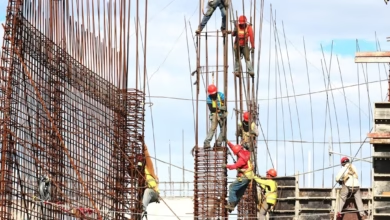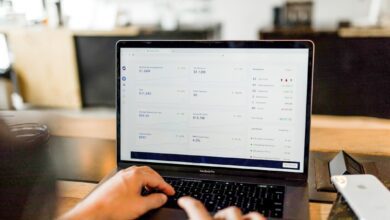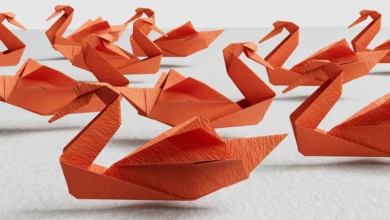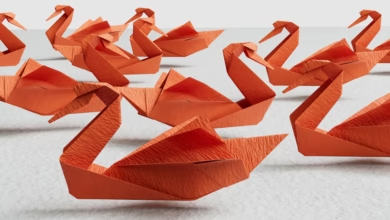Metal Markets Unveiled: Insights into Silver, Copper, and the Future of Precious and Industrial Metals

As the global economy continues to evolve, the importance of metals—both precious and industrial—grows increasingly significant across various sectors. Metals are not only essential components in manufacturing and technology but also play a pivotal role in investment strategies. This article delves into the multifaceted landscape of metal markets, beginning with silver's unique position as both an industrial asset and a popular investment choice. We will explore how copper prices serve as a barometer for global economic health and examine the surging demand for rare earth metals driven by advancements in green energy technologies. Additionally, we will compare platinum and palladium to determine which metal presents a more attractive investment opportunity, while also discussing how inflation influences the pricing of these valuable resources. Finally, we will assess the future of aluminum in an increasingly sustainable economy and consider the implications of mining regulations on metal prices. Join us as we navigate the intricate interplay between industrial demand and investment potential in the realm of metals.
- 1. **Navigating the Metal Markets: Silver's Dual Impact on Industry and Investment**
- 2. **Copper Chronicles: How Prices Mirror Global Economic Trends**
1. **Navigating the Metal Markets: Silver's Dual Impact on Industry and Investment**
Silver plays a unique and multifaceted role in both industrial applications and investment markets, making it a key player in the global metal landscape. On the industrial side, silver is highly valued for its exceptional conductivity, thermal properties, and antibacterial qualities. It is utilized in a range of applications, from electronics and photovoltaic cells to medical devices and water purification systems. As industries increasingly adopt green technologies, such as solar panels, the demand for silver is expected to rise, further intertwining its industrial utility with broader economic trends.
In the investment realm, silver is often seen as a safe-haven asset, similar to gold. Investors turn to silver during periods of economic uncertainty or inflation, viewing it as a hedge against currency devaluation. This dual role creates a complex dynamic where industrial demand can influence investment sentiment, and vice versa. For instance, when industrial demand surges, it can lead to higher prices, attracting more investors to the market. Conversely, when economic conditions deteriorate, increased investment demand can drive prices up, benefiting both industrial users and investors.
Moreover, silver's price is influenced by various macroeconomic factors, including monetary policy and global economic growth. As central banks implement policies that may devalue fiat currencies, silver, with its intrinsic value, becomes increasingly appealing to investors. At the same time, fluctuations in industrial demand can lead to price volatility, making it essential for investors to stay informed about market trends.
In summary, navigating the metal markets requires an understanding of silver's dual impact on both industry and investment. Its unique properties make it indispensable in various sectors, while its status as a financial asset offers protection and potential for growth. As the world continues to shift towards sustainable technologies and faces economic uncertainties, silver's role is likely to evolve, presenting both opportunities and challenges for stakeholders in these intertwined markets.
Silver plays a multifaceted role in both industrial and investment markets, making it a unique asset in the realm of metals. On the industrial side, silver is indispensable due to its exceptional electrical conductivity, thermal conductivity, and resistance to corrosion. It is widely used in electronics, solar energy technologies, and medical applications, all of which are experiencing growth as technology advances and sustainability becomes a priority. The increasing demand for solar panels, which often utilize silver in their production, exemplifies how silver aligns with emerging green technologies.
In the investment sphere, silver is often viewed as a safe-haven asset, similar to gold, particularly during times of economic uncertainty. Investors turn to silver as a hedge against inflation and currency devaluation. Its dual role enhances its value proposition: while it serves as a tangible asset during financial downturns, it also benefits from industrial demand during economic expansions. This duality can lead to price fluctuations influenced by both industrial usage and speculative investment.
Copper prices are a reliable barometer of global economic health, as copper is a fundamental component in construction, transportation, and various manufacturing processes. Rising copper prices often signal increased industrial activity and infrastructure development, while declining prices may indicate economic slowdowns. This correlation makes copper a critical indicator for investors and policymakers alike.
The demand for rare earth metals is largely driven by the shift toward green energy technologies, such as electric vehicles and renewable energy systems. These technologies require a range of rare earth elements for components like batteries and magnets. As the world pivots toward decarbonization, the demand for these metals is expected to surge, highlighting their strategic importance in future energy solutions.
When comparing platinum and palladium, the decision on which metal represents a better investment hinges on various factors, including market demand, supply dynamics, and price volatility. Platinum, traditionally used in jewelry and catalytic converters, has seen fluctuating demand due to the rise of electric vehicles, which do not require catalytic converters. In contrast, palladium has soared in popularity, primarily due to its use in gasoline-powered vehicles. Investors need to consider these trends and their potential implications for long-term price movements.
Investing in metals can serve as an effective strategy for portfolio diversification. Metals often exhibit low correlation with traditional asset classes like stocks and bonds, providing a buffer during market volatility. Incorporating a range of metals—precious and industrial—can enhance overall portfolio resilience.
Inflation significantly impacts the prices of both precious and industrial metals. As inflation rises, the purchasing power of currency diminishes, prompting investors to seek assets that can retain value, such as metals. Historical trends indicate that during inflationary periods, metal prices often increase, driven by heightened demand from both investors and industries.
Looking ahead, aluminum is poised to play a crucial role in a sustainable economy. Its lightweight properties and recyclability make it ideal for applications in transportation and construction, both of which are critical to reducing carbon footprints. Innovations in aluminum production processes also aim to decrease environmental impact, making it increasingly attractive for companies committed to sustainability.
Lastly, mining regulations significantly influence metal prices. Stricter regulations can lead to increased production costs and potentially limit supply, driving prices higher. Conversely, favorable regulatory environments can boost production and stabilize prices. Understanding the regulatory landscape is essential for investors looking to navigate the complexities of the metal markets.
2. **Copper Chronicles: How Prices Mirror Global Economic Trends**
Copper, often referred to as "Dr. Copper" due to its ability to predict economic health, plays a crucial role in understanding global market trends. Its price movements serve as a barometer for economic activity, given that copper is a key component in a wide range of industries, including construction, electronics, and transportation. When economies are thriving, demand for copper typically rises, leading to higher prices. Conversely, during periods of economic downturn, copper prices tend to decline, reflecting reduced manufacturing and construction activity.
Several factors contribute to the fluctuations in copper prices. For instance, data on construction spending, industrial production, and manufacturing output are critical indicators. A surge in these areas often correlates with rising copper prices, while a slowdown can lead to price drops. Additionally, global events such as trade agreements, geopolitical tensions, and supply chain disruptions can significantly impact copper availability and pricing.
Emerging markets, particularly China, play a pivotal role in determining copper demand. As one of the largest consumers of copper, China's economic growth or contraction directly influences copper prices on a global scale. The transition towards renewable energy and electric vehicles also adds new layers of complexity to copper demand, as these technologies require substantial amounts of copper for wiring and components.
Overall, monitoring copper prices provides valuable insight into the health of the global economy, making it a critical focus for investors and analysts alike. Understanding these trends can aid in making informed decisions about investments and resource allocation in a rapidly changing economic landscape.
In conclusion, the intricate dynamics of the metal markets reveal a complex interplay between industrial demand and investment potential. Silver's unique position as both an essential component in various industries and a sought-after investment asset underscores its dual significance. Meanwhile, copper prices continue to serve as a barometer for global economic health, reflecting broader trends and investor sentiment.
The increasing emphasis on green energy technologies is reshaping the demand for rare earth metals, highlighting the importance of sustainable practices in the metal industry. As investors weigh the merits of platinum versus palladium, their decisions will be influenced by market conditions and evolving technological applications.
Diversifying investment portfolios with metals can provide a hedge against inflation, which significantly impacts the prices of both precious and industrial metals. Furthermore, as we look to the future of aluminum within a sustainable economy, its role in lightweight applications and energy efficiency will be pivotal.
Lastly, the evolution of mining regulations stands as a critical factor influencing metal prices, as policymakers balance environmental concerns with economic growth. As these factors continue to develop, staying informed and adaptable will be essential for investors and industry stakeholders alike. The metal markets, with their multifaceted nature, will remain an area of keen interest and opportunity in the years to come.





